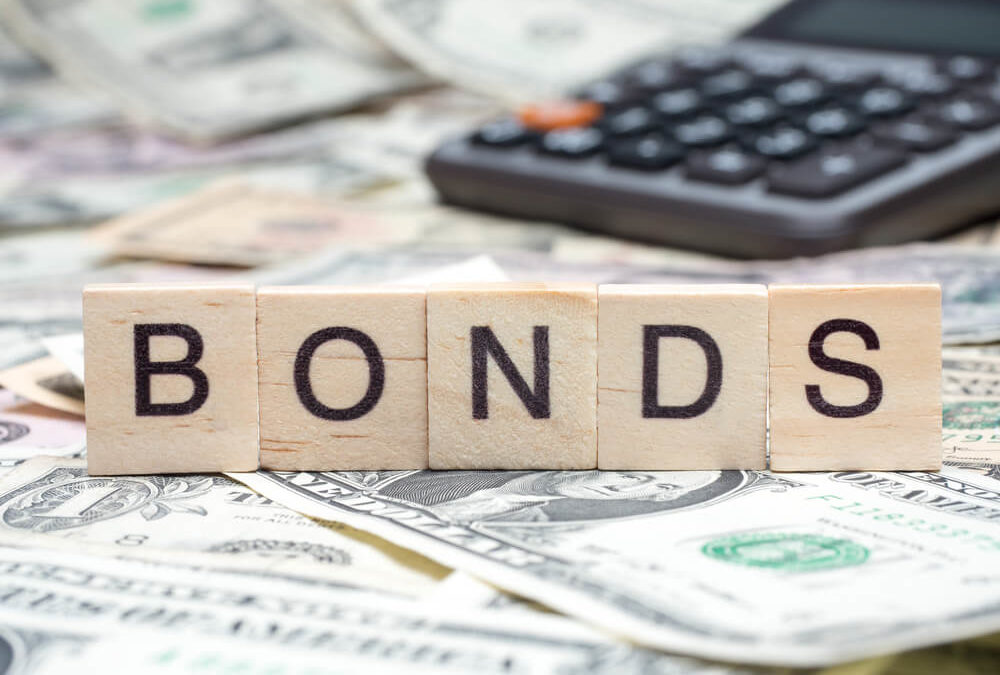Managing Editor’s Note: Charles wrote this story back in March, but with the 10-year Treasury now floating around 3.5% (an 11-year high), we thought it was worth revisiting his stance on bonds. Keep reading to see how you can put bonds to work in your own income portfolio. — Chad Stone, managing editor, Money & Markets
Is it time to go big on bonds?
The 10-year Treasury yield popped above 3.4% in mid-June. It’s since slipped a little lower as investors dump stocks and run to the comparative safety of bonds.
Pushing through this mark is noteworthy, given that yields stood at just 0.5% two years ago. But a 3.4% yield doesn’t go far when consumer price inflation runs at over 8% per year.
Bonds trading at a negative inflation-adjusted yield aren’t attractive investments. Plain and simple. Even if inflation drops back to more comfortable levels, bonds at sub-2% yield are guaranteed to lose purchasing power over time.
At the same time, it’s reckless to put all of your money in the stock market, particularly when prices are as high as they are today.
What’s an investor to do?
To answer that, let’s get back to a basic question: What are bonds good for?
Bonds Serve 2 Purposes
Most people think of bonds as income investments. (Income generation is one of the primary roles that bonds play in a portfolio.) Most bonds make coupon payments twice per year, which makes them an investment of choice for retirees.
But this benefit largely died off. A fixed coupon of less than 2% is not attractive enough right now.
Maybe that’s where the second role of bonds comes into play: volatility reduction.
Even at today’s prices, bonds do a decent job reducing volatility. When investors dump risky assets, most stuff the proceeds into something perceived as safe, such as government bonds. So when stocks fall, bond prices rise … or, at least, they hold their ground.
Are Bonds the Only Solution?
I hate bonds at these prices and yields. We can’t 100% escape them, but we can find substitutes for their core functions.
For Income
If retirement income is what you need, you can find attractive yields in dividend-paying stocks. Even moderate payers like PepsiCo offer a higher yield than government bonds. And we can expect the payout to rise over time.
Dividends are also taxed at a better rate than bond interest in most cases.
Naturally, you can blend in some higher yielders, like Spain’s energy giant Repsol, which yields just over 4%.
For Volatility
I take an approach you’re not likely to hear from your financial planner. Rather than buy and hold bonds, why not put some of your portfolio to work in a short-term trading strategy that doesn’t depend on the market always going higher?
There are risks with any trading strategy, but good risk management and sensible position sizing can offset a lot of this. My friend Adam O’Dell’s Home Run Profits premium trading research service is focused on trades that his readers only hold for months at a time. Click here to learn more.
The fact is, there is no perfect solution in today’s market. We’re left to play the cards we’re dealt. But by incorporating dividend stocks and short-term trading strategies, we give ourselves a fighting chance to secure retirement income and hedge against a major decline in the market.
To safe profits,
Charles Sizemore
Co-Editor, Green Zone Fortunes
Charles Sizemore is the co-editor of Green Zone Fortunes and specializes in income and retirement topics. He is also a frequent guest on CNBC, Bloomberg and Fox Business.






